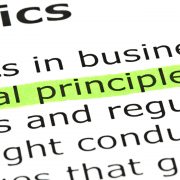Jean-Baptiste Say’s signature achievement, A Treatise on Political Economy, was first published in 1803. One notable aspect of this book is that its title combines two disciplines, economics and politics. And this makes sense if you consider that Say, besides being a gifted economist, was also a renowned philosopher and entrepreneur.
And 200 years later, poetic justice is being served as economists are finally recognizing Say’s wisdom. The PPE (politics, philosophy, and economics) movement in universities is gaining steam. According to Peter Boettke, in Richard Salman’s The Political Economy of Public Debt:
During the 20th century, the process of disciplinary specialization reduced the intersection between economics, philosophy and politics and impoverished our understanding of society. Modern economics in particular has become increasingly mathematical and largely ignores the role of institutions and the contributions of moral philosophy and politics.
Say was skeptical of pure economic statistics because he was more interested in observing facts to draw conclusions. For the average person with a casual interest in economics, his writing is precise and as simple as possible. Say’s goal was to make his ideas understandable and useful in everyday decision making.
Say’s Relative Anonymity
Jean-Baptiste Say began writing publicly in 1789 at the beginning of the French Revolution. From 1794-1800 he edited a periodical that produced works about philosophy, literature, and politics. During this time, Say wrote about the economic doctrines of Adam Smith of Scottish Enlightenment fame. According to Larry Sechrest of the Mises Institute, “Say did explicitly represent his work as being mainly an elaboration and popularization of Adam Smith’s Wealth of Nations for the benefit of continental European readers.” And partly because of that, there is a lack of appreciation for Say’s intellectual achievements.
A more sinister reason for Say being dismissed is because of the dominance of another economist in the early 20th century, John Maynard Keynes. While Say’s work focused on the production side of economic order, Keynes was focused on the consumption side. And since Keynes’ theories gave academic cover to big government economic intruders, Say’s ideas had to be crushed. After all, he had committed the crime of favoring the individual. As Hunter Hastings explains:
Keynes General Theory insists that total consumption drives the economic growth and well-being of a nation. He pulled this notion out of thin air and brought no economic reasoning to support it. And governments gleefully seized on Keynes’s novel theory, recognizing that, by promising people more consumption they could buy themselves votes and popular support.
So wouldn’t it makes sense for free market economic historians to give him greater recognition? Yes, but Sechrest explains, “J.B. Say deserves to be remembered, especially by Austrian economists, as a pivotal figure in the history of economic thought. Yet, one finds him discussed very briefly, if at all.”
The Early Years
Say was born in 1767 France. A time when France was experiencing social upheaval due to war debts and regressive taxes. When he was 22 years old, the feudal system was abolished, the French Revolution began, and the next ten years became the bloodiest debacle in social justice warrior history. Maybe that’s because of the revolution’s impractical theories – rights were derived from the state, equality was conditioned on duty to the state, and some citizens were more equal than others. One repressive regime (monarchy and church) was replaced by another (Jacobins and Girondins), and then another (Napoleon).
Despite the political violence, Say focused on what matters most for human flourishing – economics, philosophy, and entrepreneurship. Or as Say himself said, “nothing can be more idle than the opposition of theory to practice!” Economic principles forged by reality became his armor.
While Say was a student of the Enlightenment in general, and Adam Smith in particular, his writing differs from Smith in several key aspects. For example, Say judges that the value of a good is its ability to satisfy a desire for its owner, known as its utility. On the other hand (we’re talking about economists after all), Smith adhered to the classical labor theory of value – something’s value is determined by the cost of the labor expended to produce it. Say’s selection as our first Poetic Justice Warrior is explained by Sechrest:
With pen and ink, Adam Smith made the entrepreneur invisible. J.B. Say brings him back to life and to the center of the stage. What do these entrepreneurs do? They use their industry to organize and direct the factors of production so as to achieve the satisfaction of human wants. But they are not merely managers. They are forecasters, project appraisers, and risk-takers as well.
By studying essentials, Say discovered that entrepreneurs create value by anticipating what consumers will pay for. The utility theory became widely accepted around 1870 because if a consumer isn’t willing to pay for it, eventually no labor will be expended to produce it. And if no value is being created, wealth will erode for everyone.
The Entrepreneur’s Entrepreneur
In fact, the term ‘entrepreneur’ was actually invented by Jean-Baptiste Say. And not only did he advocate for the producer, he contributed mightily to Austrian school scholarship as it relates to markets, prices, and money. However, he is best known for Say’s Law, which basically says that it is production that creates markets; in other words, there would be no consumers without producers. As political economist Richard Salsman explains, “Say’s Law is the root of all other economic law,” or tongue in cheek, “the supply side is the only side.”
Here is an excerpt from Say’s Treatise in his own words translated into English:
When the producer has put the finishing hand to his product, he is most anxious to sell it immediately, lest its value should diminish in his hands. Nor is he less anxious to dispose of the money he may get for it; for the value of money is also perishable. But the only way of getting rid of money is in the purchase of some product or other. Thus the mere circumstance of creation of one product immediately opens a vent for other products.
Here, Jean-Baptiste Say is teaching us that production is the foundation of peaceful exchange and prosperity. By extension, the right of everyone to act on their own judgment must be protected from the peddlers of envy and guilt.
Pick up the Torch of Say’s Law!
Say’s brilliant analysis links producers to their understanding of money and time. Combined, they are the root causes of prosperity. Or as the Mises Institute explains about Say’s Treatise:
There is always money enough to conduct the circulation and mutual interchange of other values, when those values really exist. Should the increase of traffic require more money to facilitate it, the want is easily supplied, and is a strong indication of prosperity — a proof that a great abundance of values has been created, which it is wished to exchange for other values.
While Salsman tells us that Say’s Treatise was the textbook for America’s prosperity in the 19th century, perhaps the greatest endorsement of Jean-Baptiste Say as a Poetic Justice Warrior comes from the French economic philosopher, Frederic Bastiat. As 1830s France was plunging into socialism, Bastiat was heard to proclaim “Pick up the torch of Say’s Law!”
In 21st century America, carrying torches as been replaced by protest signs with mindless slogans. As poetic justice warriors, our torches are productivity, entrepreneurship, cooperation, and limited government.













